-
Senior Member
registered user
Could cheatcode noimage be the smartest way to handle persistence?
I have just started experimenting with Knoppix on SSD drive, and in many ways, it seems like an ideal match. Using a 240GB drive, I can set up a couple of 16 GB partitions for different Knoppix versions, plus a 50GB Win7 partition, and still have space for a /store partition for virtual machines, development work etc.
Remastering goes very fast this way (ca 5 min for 12GB system copy), but the most important practical benefit was the speed of virtual machines (under VMware workstation 8 ). Suddenly, it became quite fine to surf in a Knoppix VM under Knoppix. 
Regardless of all assurances, there are some concerns about SSD: 25 micron NANDs may have as little as 3000 write cycles/cell. And though smart controllers should be able to even out the write load, we may, for axample, have error situations where they are not able to cope fully. Last year's kernel 2.37-bug, for example, locked up one of the cores in certain configurations in a loop (machine was still usable with the other cores..), and it made my externally mounted SSD run rather hot. As long as it's only reading, it should in principle be fine - but it is possible to thrash it.
Durability may also be an issue, not all SSD drives are created equal.
So - in ordinary use, it may be advisable to minimize disk writing also with SSD. (It is of course even more important when running from USB sticks.) One simple scheme is to use knoppix-data.img mostly as a backup-and-restore volume, and use /ramdisk as the ordinary "persistent" store.
Content can be read into /ramdisk on boot, and (eventually) written back on shutdown, or when needed. It could also be scheduled as a cron job, but that would not by itself ensure full updating.
One of the reasons I have never thought much about such a solution, is that my persistent store has often been well-filled, 1-3 GB, and that's not very suitable for ramdisk handling. And I try to stick with just one KNOPPIX compressed image for ordinary use. With a SSD and squashfs, remastering is, however, so fast and simple that there is not much sense in having much data in the persistent store for a long time.
For ordinary backing up etc, it is of course often easier to use something smaller than knoppix-data.img, but switching seamlessly between noimage and persistent use may be important, for example when running same Knoppix on different machines or under different RAM requirements.
Adding a cheatcode like norestore could direct knoppix.sh to not initialize /ramdisk with the contents of knoppix-data.img on boot, and not write it automatically back on shutdown. If knoppix-data.img is written under norestore, it should probably be completely rewritten, as we could otherwise create inconsistencies.
With the emergence of cheap and fast USB3 sticks, running Knoppix off USB media has become a useful option, and this method could make it even simpler and safer. And if persistent store is not updated, the potential loss is limited to the actual session. The most important things to keep are of course program installs and updates, and good practice would be to update persistent store after each such modification.
-
Senior Member
registered user

Originally Posted by
Capricorny

So - in ordinary use, it may be advisable to minimize disk writing also with SSD. (It is of course even more important when running from USB sticks.) One simple scheme is to use knoppix-data.img mostly as a backup-and-restore volume, and use /ramdisk as the ordinary "persistent" store.
You are onto a very interesting thread here.
FWIW, I have used SD cards and SDHCs exclusively and daily for about two years
in LiveUSBs-with-persistence mode. I've yet to see one fail. Knock on wood.
2-Gb LiveCD-size SD Cards for about 18 months; 8-Gb LiveDVD-size SDHCs for the last 6 months.
I don't know how SDHCs compare with SDDs either, of course.
-
Senior Member
registered user
SDDs vs flash memory: Actually, SDDs should be in another division entirely wrt durability and reliability. And recent controllers are supposed to do a great job levelling out the write load over cells. Because worst case scenarios are more scary, I think, however, that a defensive approach may be indicated. There are two important reasons, first, the one I mentioned about situations where writing is out of control, second the occurence of short-lived copies wearing out much faster than advertised. Linux does a very good job in minimizing accesses by using RAM as cache.
But sheer performance is also a factor here: Ramdisk is, AFAIK, always faster than persistent image. It's also OK to be able to choose not to save a session. Right now, ca 230MB is used, on the ramdisk, much of it from doing an aptitude update.
Here is a small and simplistic script that could be placed, for example, in /usr/local/bin and called from knoppix.sh or /etc/rc.local, or command line. For general use, some more checks are needed, but it's a starting point.
Code:
#!/bin/bash
# update_image.sh - Script for restoring ramdisk content
# from or saving to persistent image 20120701 tay
#
# Create loop15 if necessary
[ -b /dev/loop15 ] || sudo mknod -m 755 /dev/loop15 b 7 15
task=$1 ; shift ;
case "${task}" in
"restore")
echo -e 'Restore to ramdisk..' ;
[ -d /tmp/mntimg0 ] || mkdir /tmp/mntimg0 ;
mount -t ext3 -rw -o loop=/dev/loop15 /mnt-system/KNOPPIX/knoppix-data.img /tmp/mntimg0 ;
rsync -ax /tmp/mntimg0/* /ramdisk ;
umount /tmp/mntimg0 ;
echo -e 'Restore to ramdisk done' ;
;;
"save")
echo -e 'Save to persistent store...' ;
[ -d /tmp/mntimg0 ] || mkdir /tmp/mntimg0 ;
mount -t ext3 -rw -o loop=/dev/loop15 /mnt-system/KNOPPIX/knoppix-data.img /tmp/mntimg0 ;
rsync -axu /ramdisk/* /tmp/mntimg0 ;
umount /tmp/mntimg0 ;
echo -e 'Save to persistent store done' ;
;;
*)
echo -e "Ooops: $task???" ;
;;
esac
#
#
The logic could be that it is called automatically when noimage but not norestore is present in /proc/cmdline. It could be called manually anytime.
-
Senior Member
registered user
As a side issue, I've always wanted a command to NOT automatically update my persistent
image on shutdown when I know that doing so will irreparably corrupt that image.
For example, having 'run out of memory on the device' comes to mind.
-
Senior Member
registered user

Originally Posted by
utu

As a side issue, I've always wanted a command to NOT automatically update my persistent
image on shutdown when I know that doing so will irreparably corrupt that image.
For example, having 'run out of memory on the device' comes to mind.
I have thought a little bit more about this, and I think noimage should keep its current meaning: No link to persistent store. Then two cheatcodes could be added for a linking: update for restore on boot and save on shutdown, and noupdate for restore without final update. So that you could get what you want with the two cheatcodes noimage noupdate.
If you want to save without prior restore, you are effectively rewriting persistent store, so that should be done manually.
To sum up, noimage update would give "ramdisk-as-persistent-store" action, noimage noupdate would init ramdisk from persistent store, but not save automatically, and noimage alone would start with blank ramdisk, as it does now. In a table:
Code:
restore
Y N
save Y update --manually--
N noupdate noimage
The script could be expanded with more cases/parameters, for example for creating a cloop/squashfs overlay.
-
Senior Member
registered user
Updated script with cloop/squashfs overlay generation
I haven't tested the generated overlays, but it shouldn't be far off from something usable 
For creating overlays, like KNOPPIX1, KNOPPIX2.sq etc, the overlay number must be given as a parameter. The created overlays are just dumped in /tmp, but that's the way Klaus K seems to do it.
Code:
#!/bin/bash
# update_image.sh - Script for restoring ramdisk content
# from or saving to persistent image 20120701 tay
#
# Create loop15 if necessary
[ -b /dev/loop15 ] || sudo mknod -m 755 /dev/loop15 b 7 15
task=$1 ; shift ;
case "${task}" in
"restore")
echo -e 'Restore to ramdisk..' ;
[ -d /tmp/mntimg0 ] || mkdir /tmp/mntimg0 ;
mount -t ext3 -rw -o loop=/dev/loop15 /mnt-system/KNOPPIX/knoppix-data.img /tmp/mntimg0 ;
rsync -ax /tmp/mntimg0/* /ramdisk ;
umount /tmp/mntimg0 ;
echo -e 'Restore to ramdisk done' ;
;;
"save")
echo -e 'Save to persistent store...' ;
[ -d /tmp/mntimg0 ] || mkdir /tmp/mntimg0 ;
mount -t ext3 -rw -o loop=/dev/loop15 /mnt-system/KNOPPIX/knoppix-data.img /tmp/mntimg0 ;
rsync -axu /ramdisk/* /tmp/mntimg0 ;
umount /tmp/mntimg0 ;
echo -e 'Save to persistent store done' ;
;;
"cloop")
overlay_no=$1 ; shift ;
sudo mkisofs -R -U -m 'root/*' -m 'home/*' -m 'lost+found/*' -m '.wh*' /ramdisk | create_compressed_fs -B 131072 -m - - > /tmp/KNOPPIX${overlay_no} 2>~/make_comprisofs.log
;;
"squashfs")
overlay_no=$1 ; shift ;
sudo mksquashfs /ramdisk /tmp/KNOPPIX${overlay_no}.sq -e root home lost+found .wh..wh.aufs .wh..wh.orph -b 262144 -noappend 2>~/make_squashfs.log
;;
*)
echo -e "Ooops: $task???" ;
;;
esac
-
Senior Member
registered user
In my Post #17 on the following thread in a little program I call 'smite' I develop an update image name 'UPDIMG' which figures out what to call the next image to be stacked, based on what's gone on before. Maybe something like that would be useful to you.
http://knoppix.net/forum/threads/298...083#post127083
-
Senior Member
registered user

Originally Posted by
utu

In my Post #17 on the following thread in a little program I call 'smite' I develop an update image name 'UPDIMG' which figures out what to call the next image to be stacked, based on what's gone on before. Maybe something like that would be useful to you.
http://knoppix.net/forum/threads/298...083#post127083
It is useful yes, though I don't think of this overlay business as necessarily sequential right now. Therefore I would prefer that the overlay number is given as an explicit parameter. Why not use KNOPPIX9 for something really far out, for example? They could all be made independent, making sequence number rather irrelevant.
There are a few alternatives for calling the scripts. On boot, /etc/init.d/knoppix-autoconfig, /etc/rc.local or /mnt-system/KNOPPIX/knoppix.sh can be used. On shutdown, /etc/init.d/knoppix-halt is at least one good candidate.
They could be patched with something like this. (Again, I haven't checked this out bash/busybox syntax is a bitch  )
)
Code:
# On boot e.g. /etc/init.d/knoppix-autoconfig
if grep -s -w -i "noimage" /proc/cmdline ; then
if grep -s -w -i "update" /proc/cmdline || grep -s -w -i "noupdate" /proc/cmdline ; then
update_image.sh restore
fi
fi
#
# On shutdown e.g. /etc/init.d/knoppix-halt
if grep -s -w -i "noimage" /proc/cmdline ; then
if grep -s -w -i "update" /proc/cmdline ; then
update_image.sh save
fi
fi
#
#
Then this would be implemented without any real internal surgery, like patching minirt init. The only places the new cheatcodes are referred to, are in these scripts.
 Posting Permissions
Posting Permissions
- You may not post new threads
- You may not post replies
- You may not post attachments
- You may not edit your posts
-
Forum Rules

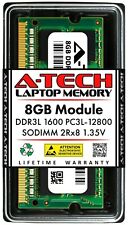
A-Tech 8GB DDR3 1600 PC3-12800 Laptop SODIMM 204-Pin Memory RAM PC3L DDR3L 1x 8G
$13.99

HyperX FURY DDR3 8GB 16GB 32GB 1600 MHz PC3-12800 Desktop RAM Memory DIMM 240pin
$12.90
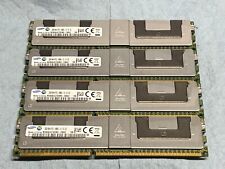
Samsung 128GB (4x 32GB) M86B4G70DM0-CMA3 PC3-14900L 4Rx4 DDR3 ECC Reg Server Mem
$39.99
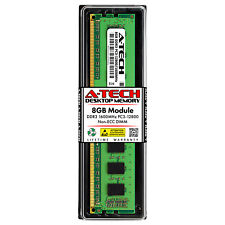
A-Tech 8GB PC3-12800 Desktop DDR3 1600 MHz Non ECC 240-Pin DIMM Memory RAM 1x 8G
$13.99

HyperX FURY RAM DDR4 16GB 8GB 32GB 4GB 3200 2666 2400 2133 Desktop Memory DIMM
$9.64
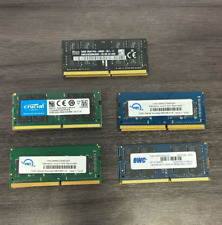
Lot of 2 32GB DDR4 2666 PC4-21300 SODIMM RAM Modules Mixed Brand
$60.00
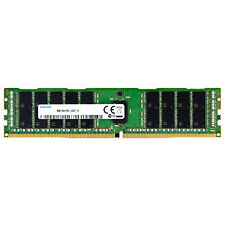
Samsung 16GB 2Rx4 PC4-2400 RDIMM DDR4-19200 ECC REG Registered Server Memory RAM
$20.99
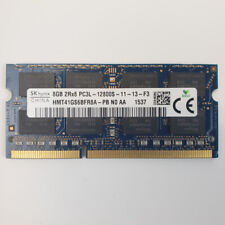
8GB PC3L-12800S 1600MHz SODIMM DDR3 RAM | Grade A
$12.00
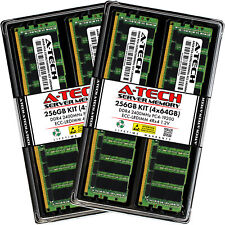
A-Tech 256GB 4x 64GB 4Rx4 PC4-19200 ECC Load Reduced LRDIMM Server Memory RAM
$287.96
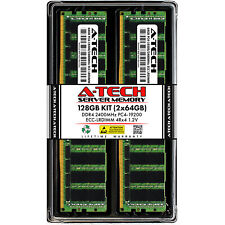
A-Tech 128GB 2x 64GB 4Rx4 PC4-19200 ECC Load Reduced LRDIMM Server Memory RAM
$143.98



 Reply With Quote
Reply With Quote











